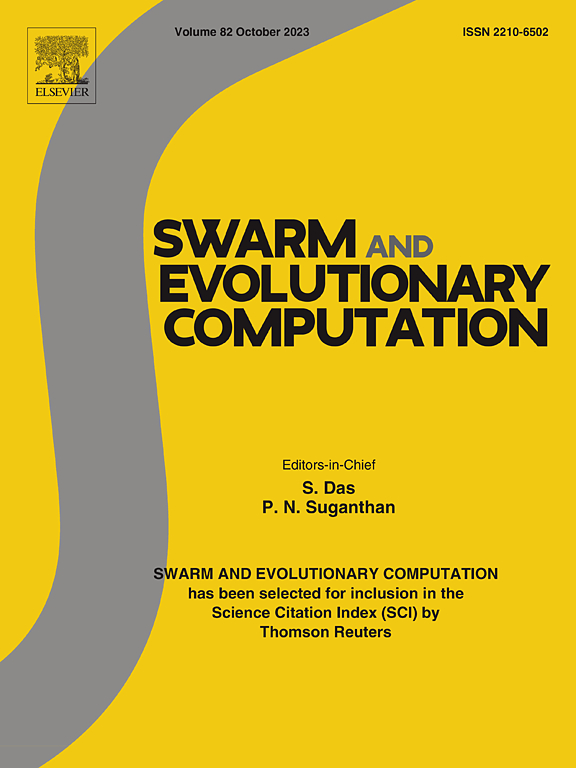基于规则的进化多目标优化综述
IF 8.5
1区 计算机科学
Q1 COMPUTER SCIENCE, ARTIFICIAL INTELLIGENCE
引用次数: 0
摘要
在温和条件下,证明了连续m维多目标优化问题(MOP)的Pareto最优解在搜索空间中形成一个分段(m-1)维流形结构,这种特征被称为正则性。作为MOP的一个领域知识,自2008年首次提出以来,这种规律性在提高多目标进化算法(moea)的性能方面表现出了巨大的潜力。然而,对于moea设计中的规律性,目前还没有系统的研究。本文旨在通过提供基于规则的进化多目标优化(REMO)方法的全面回顾来解决这一差距。我们希望这次调查能够帮助EMO研究者对REMO有一个全面的了解。本文章由计算机程序翻译,如有差异,请以英文原文为准。
Regularity-based evolutionary multi-objective optimization review
Under mild conditions, the Pareto optimal solutions of a continuous -dimensional multi-objective optimization problem (MOP) have been proved to form a piecewise (-1)-dimensional manifold structure in the search space, a characteristic known as the regularity property. As a domain knowledge of MOP, since the first proposal in 2008, this regularity property has demonstrated significant potential for enhancing the performance of multiobjective evolutionary algorithms (MOEAs). However, there has yet to be a systematic survey of the regularity property within the design of MOEAs. This article aims to address this gap by providing a comprehensive review of regularity-based evolutionary multi-objective optimization (REMO) approaches. We hope that this survey will help EMO researchers to have a comprehensive understanding of REMO.
求助全文
通过发布文献求助,成功后即可免费获取论文全文。
去求助
来源期刊

Swarm and Evolutionary Computation
COMPUTER SCIENCE, ARTIFICIAL INTELLIGENCEC-COMPUTER SCIENCE, THEORY & METHODS
CiteScore
16.00
自引率
12.00%
发文量
169
期刊介绍:
Swarm and Evolutionary Computation is a pioneering peer-reviewed journal focused on the latest research and advancements in nature-inspired intelligent computation using swarm and evolutionary algorithms. It covers theoretical, experimental, and practical aspects of these paradigms and their hybrids, promoting interdisciplinary research. The journal prioritizes the publication of high-quality, original articles that push the boundaries of evolutionary computation and swarm intelligence. Additionally, it welcomes survey papers on current topics and novel applications. Topics of interest include but are not limited to: Genetic Algorithms, and Genetic Programming, Evolution Strategies, and Evolutionary Programming, Differential Evolution, Artificial Immune Systems, Particle Swarms, Ant Colony, Bacterial Foraging, Artificial Bees, Fireflies Algorithm, Harmony Search, Artificial Life, Digital Organisms, Estimation of Distribution Algorithms, Stochastic Diffusion Search, Quantum Computing, Nano Computing, Membrane Computing, Human-centric Computing, Hybridization of Algorithms, Memetic Computing, Autonomic Computing, Self-organizing systems, Combinatorial, Discrete, Binary, Constrained, Multi-objective, Multi-modal, Dynamic, and Large-scale Optimization.
 求助内容:
求助内容: 应助结果提醒方式:
应助结果提醒方式:


